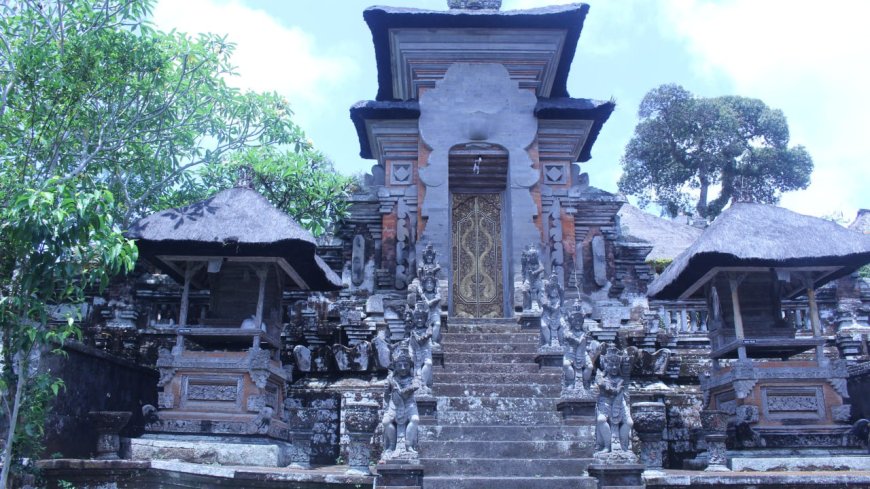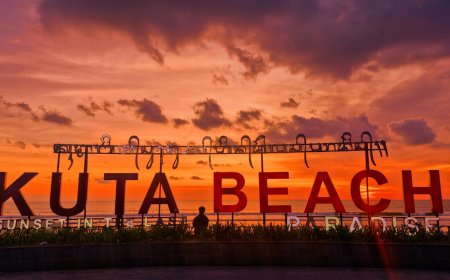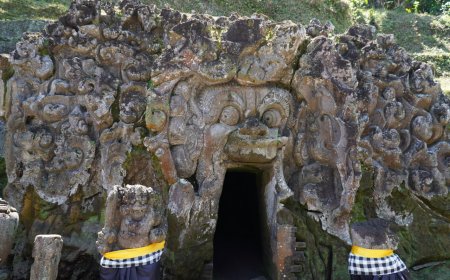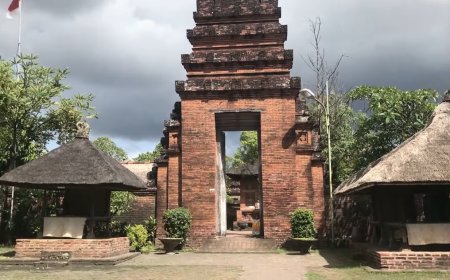Samuan Tiga Temple: The Source of Tri Murti Philosophy and Kahyangan Tiga Temple in Bali
Bali is dubbed as the island of a thousand temples, a cliché that always comes to mind when hearing the word Bali. This indicates how the existence of temples as a sacred place for Hindus has always accompanied the footsteps of people's lives in Bali. The establishment of temple buildings in Bali is not a coincidence but a sacred religious philosophy and the result of historical events. The history of the samuan tiga temple introduced the concept of Tri Murti teachings which then brought changes to the concept of temple buildings in Bali which is currently known as the Kahyangan Tiga temple.

Samuan Tiga Temple is located in Bedulu Village, Blahbatuh District, Gianyar Regency. Etymologically, Pura Samuan Tiga consists of two words: "Samuan" means meeting, banquet or gathering, while "Tiga" refers to the number three. Samuan Tiga Temple is a meeting place (pesamuan) between three important Hindu religious sects in Bali. As one of the temples with a thick historical history and believed to be the origin of the concept of Tri Murti worship, Samuan Tiga temple was originally known as Gunung Goak temple. Initially, around the end of the 10th century or the beginning of the 11th century, there were many concerns that occurred because of the many Hindu religious sects that developed in Bali. At that time the Balinese population adhered to sadsecta (six sects) including: Sambhu, Khala, Brahma, Vishnu, Bhayu and Iśwara. Each of these sects has a tendency to emphasize itself and even to denigrate other sects because each sect wants to influence and take public sympathy. Queen Mahendradatta saw this as a threat and instability in her society. So Mpu kuturan was summoned to make a meeting (pesamuan) which was attended by three major groups of Hindu religious sects, namely: Śiva Śiddhanta Sect, Mahayana Buddhism and Bali Aga Sect. The result of the meeting also gave birth to the "Samuantiga Concept" as the philosophical basis for the establishment of pakraman villages/indigenous villages with Kahyangan Tiga and Kemulan Rong Telu as the implementation of the concept of Tri Mūrti worship in Bali. In Hinduism, Tri Murti consists of Brahma, Vishnu and Shiva. With the emergence of the concept of worshiping the three Gods, the idea of a place of worship kahyangan Tiga is made, namely Pura Puseh, Pura Dalem, Pura Desa or usually called Bale Agung. The concept of Kahyangan Tiga was then brought into the social system of society and became the main pillar of the establishment of traditional villages / pakraman villages in Bali.

Candi Bentar of Samuan Tiga Temple (Source : Personal Collection)
The building structure of the samuan tiga temple is divided into six mandalas arranged from the jaba to the jerooan with an increasing arrangement. The six mandalas (levels) are jaba mandala, mandala ratu agung sakti, mandala bhatara ratu agung, mandala batan manggis, mandala samanggen, main mandala (jeroan). Jaba mandala is the road to Taman Sari village and is also a parking lot for pemedek (people who pray). Entering the temple area, on the west side of the stairs down to the main mandala you will find the witnessing temple. Where there are statues wearing tengkorang decorations commonly referred to as bairawa decorations.
In the second mandala, the ratu agung sakti mandala is located to the right of the main entrance. There are some relics of star stones, some statues and building elements. Entering the third mandala, the betara ratu agung mandala is a place of worship focused on betara ratu agung. There is also a pelinggih penerengan sekar which is a relic of the colonial period. There is also a pengaruman which is a place for bhatara who comes during the ceremony and right in the middle of it pemedek carry out prayers to ida bhatara.
Mandala batan manggis is the fourth mandala, which is where the parekan before ngayah siat sampian performed prayers and there are also relics such as worship stones from several previous sects. The fifth mandala is the samanggen mandala where the ngayah community makes piodalan completeness. The last mandala is the main mandala (jeroan) which is the highest level of mandala where there are a number of pelinggih where bhatara resides or melinggih, then there are also archaeological relics in the form of lingga yoni which is one of the evidence of the pasuparta sect. There is also a statue of Vishnu that comes from the Vishnu sect that developed in Bali at that time.





























































